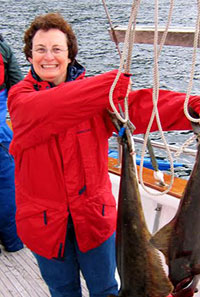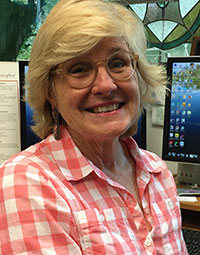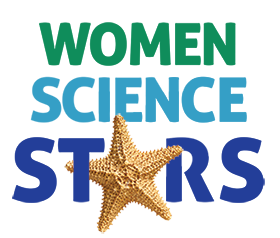By Sigrid Tidmore
It’s easy to understand why kids grow up and want to be movie stars, athletes or rock stars. But when today’s women environmental scientists began their careers — not only wasn’t it glamorous — most people didn’t even know why it should matter. In fact, before 2000, girls were commonly expected to be “bad at science.” Happily, today it’s a different story. We’re taking a closer look at what made eight of our regions’ top environmental scientists excel. This is the third part of three articles about eight amazing women who have helped make Tampa Bay a healthier ecosystem.
Describe your job and what makes it rewarding
 Susan S. Bell, Professor, University of South Florida, Department of Integrative Biology
Susan S. Bell, Professor, University of South Florida, Department of Integrative Biology
In my job, I’m either teaching, doing research or offering professional services in an academic setting. I’ve also served as chair of my department for four years.
On most days, I think I have the best job because I am always learning. I have been able to travel broadly and have had the opportunity to work with some great students and colleagues. I’m proud of my professional accomplishments in the field of marine ecology.
 Suzanne Cooper, (retired.) principal environmental planner of Tampa Bay Regional Planning Council
Suzanne Cooper, (retired.) principal environmental planner of Tampa Bay Regional Planning Council
I loved working in this position. I was the staff to the TBRPC’s Agency on Bay Management; the council’s environmental reviewer for Developments of Regional Impact, local government comprehensive plan amendments, and state and federal land alteration permit applications; represented TBRPC and/or the ABM on various regional committees; represented the regional environmental community on the Tampa Bay Harbor Safety & Security Committee.
The most rewarding part of my job was working with so many dedicated environmental professionals, assisting the Agency on Bay Management and being part of so many collaborative efforts.
 Margaret “Penny” Hall, PhD, research scientist, Florida Fish and Wildlife Research Institute.
Margaret “Penny” Hall, PhD, research scientist, Florida Fish and Wildlife Research Institute.
I lead the Seagrass Research and Restoration Team at FWRI, and my job is to conserve and protect Florida’s seagrass resources. My team and I conduct field research to assess the ecological status of seagrass systems, evaluate trends in seagrass ecosystem health, and identify physical and biological factors that affect seagrass communities. We have also developed and evaluated techniques for seagrass restoration.
I think that when your passion is also your life’s work every day on the job is rewarding. But if I had to pick the one thing I am most proud of, it would be the research project my team and I have conducted in Florida Bay during the past 22 years. The data we have collected represents one of the most long-term studies of seagrass communities in the world.
2. What inspired you to choose environmental science? Was a special person or event involved?
Susan: I started to develop an interest in science in high school. Initially I was an undergraduate major in biology at Clark University. During a winter semester “short course,” I received a scholarship and went to the Bermuda Biological Station to explore the marine environment. We were also able to observe resident scientists working on a wide variety of research topics and I first realized that being a marine biologist could actually be a fulfilling profession.
Two professors were instrumental in encouraging me: Dr. R. Nunnemacher at Clark University and Dr. Bruce Coull, who was initially at Clark University and then moved to the University of South Carolina. I should admit that both my parents were a bit skeptical about my career choices, but my husband was fully supportive.
Suzanne: I got inspired in high school, after taking biology classes and learning about marine science as a possible career. I lived in northeast Florida at a time when children could play outdoors. Then I went to college when “ecology” was a new word and ecosystems were being recognized, and I was given the opportunity to work on various projects that deepened my interests.
My mentors included Dr. John Betz at USF, and Ken Alvarez, regional naturalist for the Florida DNR/DER who was passionate about native Florida.
Penny: I knew from the time I was a child that I wanted to be a scientist. Unlike most of the little girls I grew up with in South Carolina, I was a huge tomboy. I have always been driven by the desire to understand why plants and animals do the things they do; e.g. why do cacti have thorns or chameleons use camouflage? Becoming a community ecologist was the logical way to satisfy my natural curiosity concerning why and how organisms operate. I started my career working with marine algae, but eventually found my way to seagrasses because, in my opinion, they are the anchor of Florida’s coastal marine ecosystems.
My parents always supported my interests, and gave me the strength, courage, and opportunity to attend graduate school at the University of South Carolina. During my first semester at USC, I took a course in marine invertebrate zoology with a professor named Bruce Coull that absolutely captivated me. My time in that class showed me the beauty and complexity of marine life, and set me on the path to become a marine ecologist.
3. What has been the most difficult challenge you’ve faced?
Susan: Balancing the demands of an academic job with those of family life.
Suzanne: Convincing elected officials that the region’s natural resources are a critical part of our economic engine, and convincing developers that preservation of special habitats adds value to their projects.
Penny: The most difficult challenge I have faced is fear of making a mistake. Being a scientist often leads to theories or ideas that are controversial and are sometimes proven to be incorrect. But new ideas are the way scientific understanding moves forward, and you can’t let the fear of being wrong hold you back or you will never accomplish anything.
[su_divider top=”no”] [su_note note_color=”#d2f4e4″ text_color=”#000000″]
Learn what all our women science stars had to say:
If you missed Part 1, find it here.
- Holly Greening, executive director of the Tampa Bay Estuary Program since its inception 25 years ago.
- Kimberly Yates, PhD, U.S. Geological Survey – a senior research oceanographer at the Coastal and Marine Science Center.
If you missed Part 2, find it here.
- Sarina Ergas, professor, University of South Florida, Dept. of Civil & Environmental Engineering
- Kelli Hammer Levy, division manager, Pinellas County Natural Resources
- L. Kellie Dixon, PhD, senior scientist, Ocean Technology Program, Mote Marine Laboratories